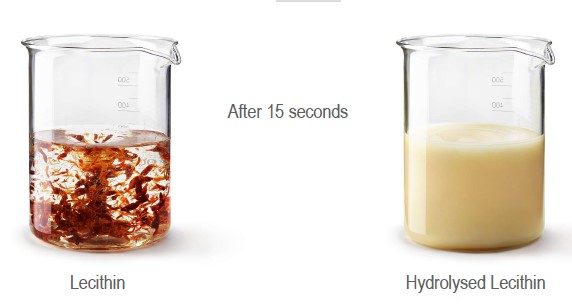HYDROLYZED LECITHIN (ENZYMATIC LECITHIN)

We mentioned earlier that the emulsifier is a binder that loves both oil and water. Therefore, they can combine two substances that do not mix normally. However, emulsifiers are also classified as water or oil lover (hydrophilic and lipophilic). This classification is based on the hydrophilic-lipophilic balance, ie ratio of oil or water liking. This ratio is important in determining the correct emulsifier to be used in application.
For example; While esters, mono and diglycerides are used to prevent fat bloom in applications such as tahini and halva, lecithin is preferred to keep the structure stable in chocolate and bakery products. In addition, in some applications, both can be used together.
So what is hydrolyzed lecithin? Lecithin is actually a low hydrophilic and high lipophilic emulsifier. So it dissolves in fat and holds water. When its structure is changed by enzymatic reactions, it can be transformed into a product that loves more water. In other words, it can be made to function closer to esters. In this case, lecithin dissolves faster in water.

As for the advantages; Hydrolyzed lecithin may be preferred in applications where standard lecithin does not dissolve well. In particular, it is preferred to prevent breakage in dough kneading, to prevent breakage in fat-free (low-calorie diet or infant) biscuits or to increase plasticity in breakfast cereals. It provides the preservation of the volume in bakery products and facilitates the formation of crust during cooking.
Another usage area is frying oils. Hydrolyzed lecithin is preferred to prevent spattering at high temperatures. Since hydrolyzed lecithin does not contain synthetic emulsifiers such as esters, it is also preffered by ice cream producers for more clean labels.
You can contact us for more detailed information, samples and price requests.
